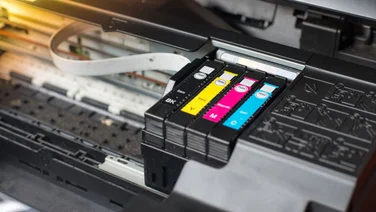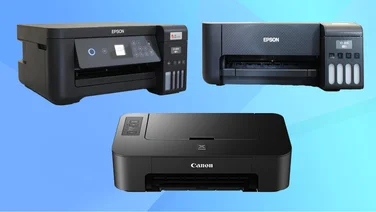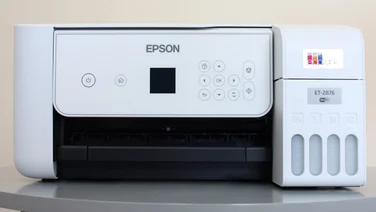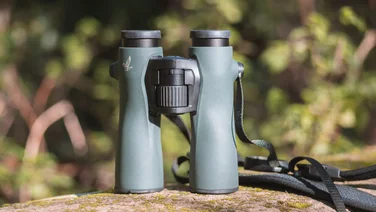To help us provide you with free impartial advice, we may earn a commission if you buy through links on our site. Learn more










Expert Reviews is proud to bring you this Panasonic Lumix DMC-GF3 review from Short Sharp Reviews – click through to YouTube for a 1080p HD version
Big-sensor compacts are the most exciting development in camera technology in a long time. The gulf in image quality between conventional compact cameras and SLRs has never been bigger, but these hybrid models deliver the best of both worlds, with genuine SLR quality in a pocket-sized format.
The GF3 is Panasonic’s smallest, lightest G-series camera to date, shedding 46g compared to the GF2. There are a few casualties, most notably the accessory shoe that enabled using either an external flashgun or the optional electronic viewfinder. It’s disappointing, but these are niche features that few people will miss. The microphone has been repositioned, which meant we often accidentally covered it with a finger, obliterating the soundtrack. It’s also a mono mic, whereas the GF2’s is stereo. The battery is a little smaller but battery life is up by 20 shots, so we’ve no complaints there.

Panasonic appears to be on a mission to remove physical controls from its G-series cameras, but we’re glad to report that the changes this time are minimal. The GF2’s command dial is replaced by a wheel that encircles the navigation pad, in much the same way as the Olympus PEN range, and we found this just as quick to use. The command dial’s clickable action has been lost, though – that role is taken over by the up button on the navigation pad, which in turn relegates the ISO speed control to the menu. Thankfully, the Q.Menu button jumps to the last-accessed setting, which means it effectively acts as an ISO control for those who access it regularly.

Image quality at ISO 800 is excellent – it’s a shame the Auto ISO mode doesn’t go any higher. Click on this image to enlarge it
It’s something that’s worth doing when shooting in low light. Bizarrely, the automatic ISO mode was unwilling to venture beyond ISO 800, which often resulted in blur-inducing long shutter speeds – the lack of optical stabilisation in the kit lens didn’t help. There’s a menu option to set the maximum ISO speed from 200 to 1600, but switching to Intelligent Auto mode overrides this setting. It’s daft that a big-sensor camera like this can only shoot at ISO 3200 when the ISO speed is set manually.
The layout of controls is very similar to those on the GF3’s closest rival, the Sony NEX-5. However, the GF3’s touchscreen speeds up certain functions and transforms the accessibility of autofocus options. We particularly appreciated being able to touch the screen while recording a video clip, whereupon the camera automatically tracked the subject in question to keep it in focus.

This is one of many reasons why the GF3 excels as a video camera. The 1080p resolution and AVCHD format encoded at 16Mbit/s helped to deliver sharp details with minimal compression artefacts, and autofocus was smooth and virtually silent. There was remarkably little noise in low light, and close-up shots exhibited a film-like shallow depth of field. The lack of an exposure lock for video is disappointing, but the camera reacted smoothly to changing lighting.

Taking photos with the GF3 was an extremely satisfying experience, too. It’s not the most secure camera to hold one-handed, but its shape and feel – and the solid clunk of its mechanical shutter – give a sense of real luxury. Even the leather neck strap is a step up from the norm. It’s seriously fast, too, switching on and capturing a shot in just one second, and taking just 0.6 seconds between subsequent shots. Continuous mode ran at 4fps for 13 JPEGs or six RAW images before slowing to a slightly disappointing 0.5fps.

The GF3 can take some astonishingly good pictures – Click on this image to enlarge it
Image quality was excellent, as long as we kept an eye on the shutter speed in low light and switched to manual ISO speeds to avoid blurry shots. Details were astonishingly sharp, and in bright light, subtle textures such as foliage and skin were captured with superb clarity. We failed to replicate the problem of under-saturated bands in skin tones that we’ve seen in previous G-series cameras’ JPEGs. Noise levels inevitably rose when lower light demanded fast ISO speeds, but noise was lower than we saw from the GF2. However, it wasn’t as low as from the best consumer SLRs – and also, crucially, the Sony NEX-5.
Turn to page 3 for our take on pricing and offers …
£550 is a frightening amount to spend on what is primarily a point-and-shoot camera, but we expect the price to come down a little when it reaches shop shelves. As we go to press, it’s available on pre-order from Jessops with an 8GB SDHC card, shoulder bag and Gorillapod thrown in to sweeten the deal. Panasonic adds further incentives with a five-year warranty and a free copy of Adobe Photoshop Lightroom 3 until 31 August 2011 (see here for details). That’s about £300 of freebies in total – and all of them genuinely useful. Meanwhile, switching the 14mm pancake lens for a 14-42mm zoom lens trims £50 off the price.

The optional 14-42mm kit zoom spoils the point of the GF3’s compact size
We’d recommend sticking with the pancake lens, though. A key attraction of the GF3 is that it fits into a pocket or handbag, but switching to the zoom lens makes it much bulkier. The 14mm lens gives a fairly wide 28mm equivalent focal length, which is perfect for landscapes, general sightseeing and group shots, and while it’s not so good for individual portraits, there’s always the option to crop photos after capture. The 14mm lens also benefits from a wider f/2.5 maximum aperture, although the advantage is offset by the lack of stabilisation (the zoom lens has this built in). There’s always the option to buy another lens later, of course – and a twin-lens kit is available for £630 for those with the cash to splash.
While the freebies last, the GF3 is an extremely attractive prospect – Lightroom is a superb program that every keen photographer should own. However, after they expire, we’d be more tempted by the Sony NEX-5. The GF3 is quicker to use but the NEX-5 takes better photos in low light. Both excel for video. However, the NEX-5 currently costs just £411 from Amazon with its 16mm pancake lens. There’s also the NEX-C3 just around the corner, which is available for pre-order from Jessops for £530 with twin lenses. That might well be the one to go for – look out for our imminent review.





